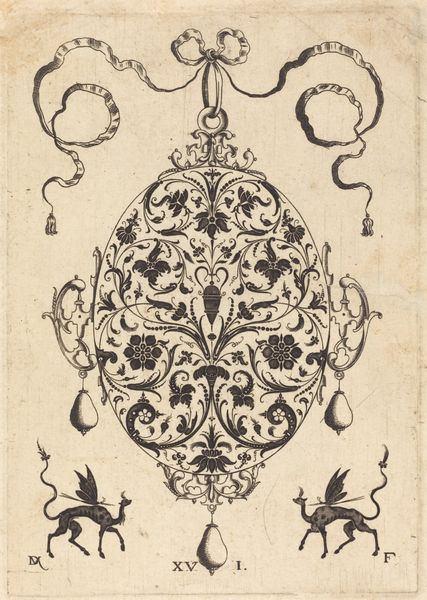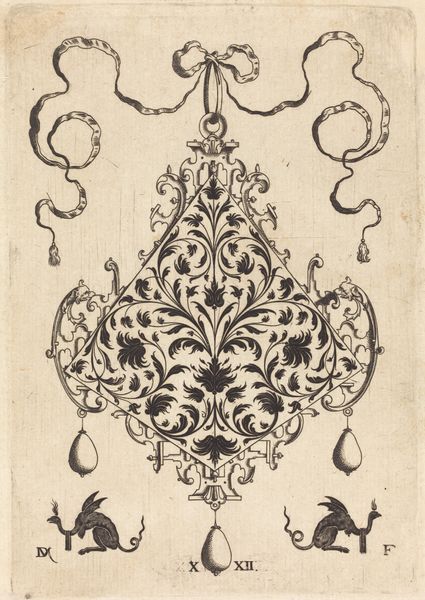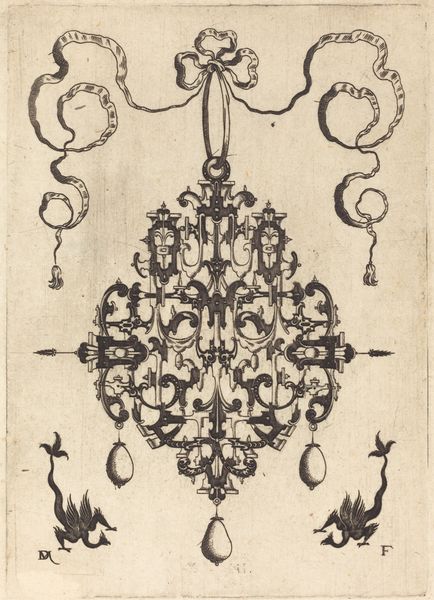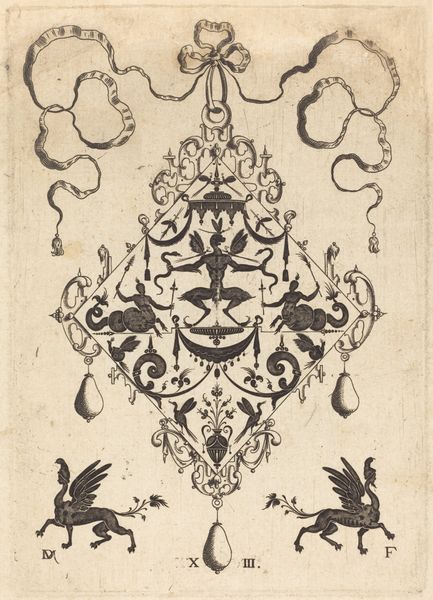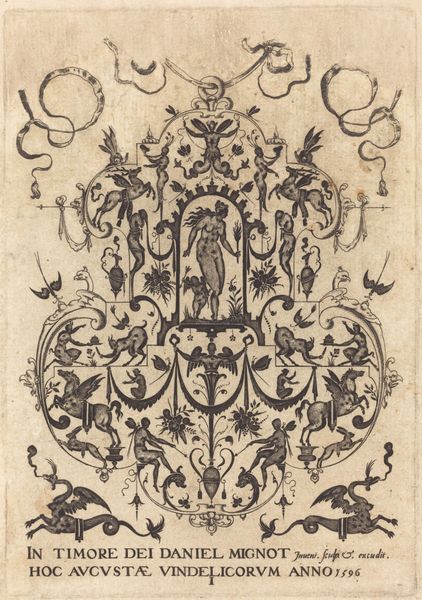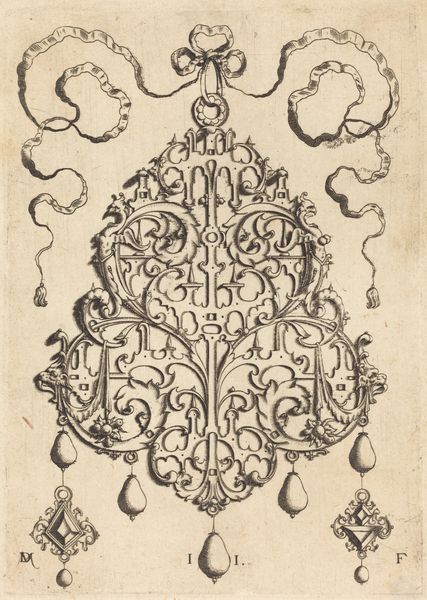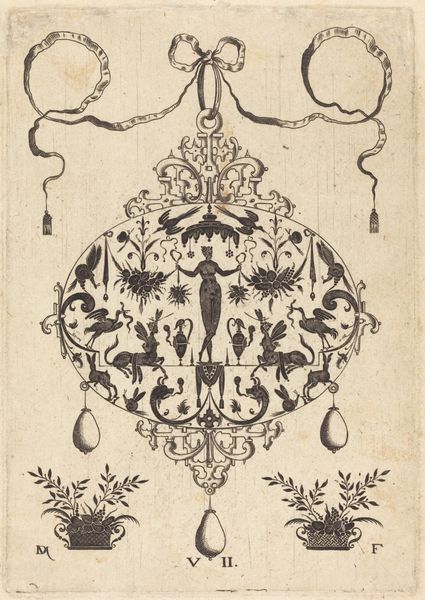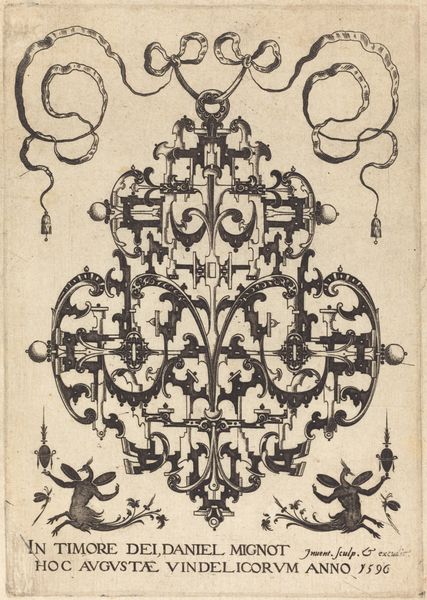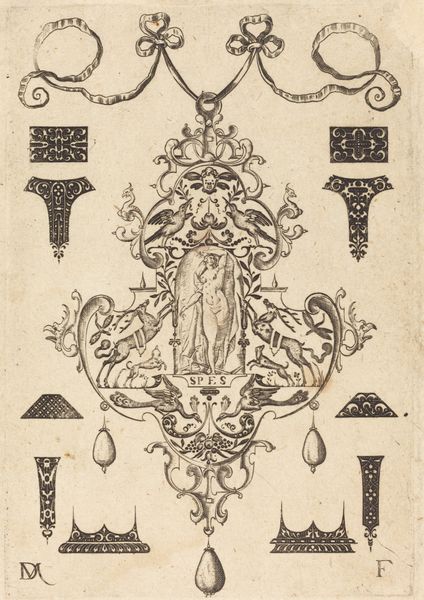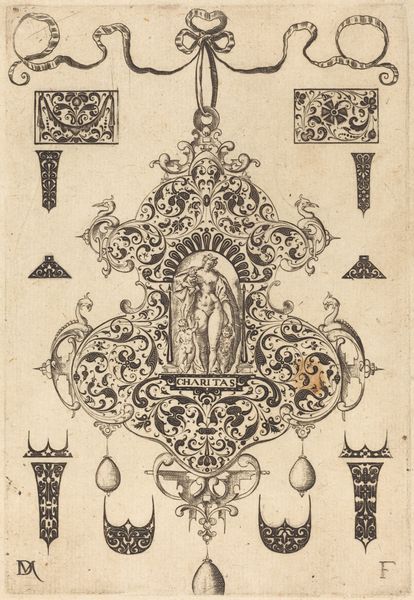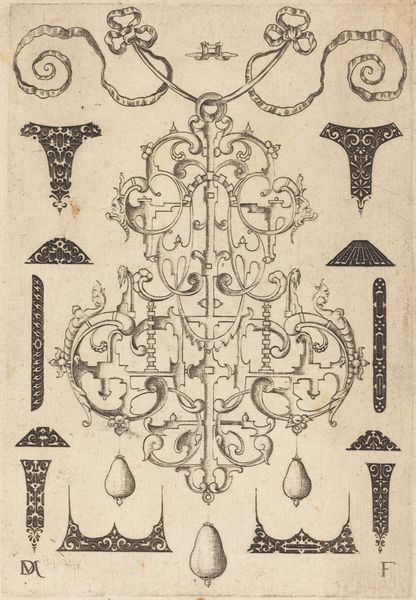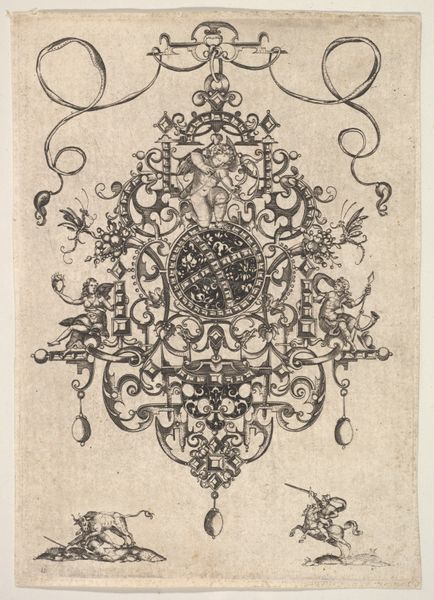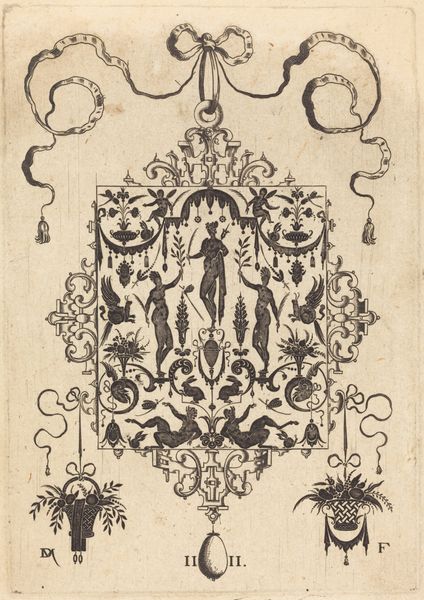
Large Pendant, In Circular Form, Nude Man Flanked by Two Herms 1596
0:00
0:00
drawing, print, etching, engraving
#
drawing
#
allegory
#
baroque
#
pen drawing
# print
#
etching
#
mannerism
#
figuration
#
11_renaissance
#
nude
#
engraving
Copyright: National Gallery of Art: CC0 1.0
Editor: This is "Large Pendant, In Circular Form, Nude Man Flanked by Two Herms," an engraving by Daniel Mignot from 1596. It's incredibly intricate; I'm immediately struck by the sheer density of the design, the detail in each little flourish. How should we go about interpreting this ornamental piece? Curator: Let's consider this pendant in its materiality and social context. It's not just "ornament"; it's an engraving meant for reproduction. What does this say about its intended audience and its function? Editor: Well, the multiple copies suggest accessibility; it’s not a unique, precious object, but designed for wider circulation, perhaps as a template or design source? Curator: Exactly! And think about the labour involved in creating and disseminating these images. The engraver, the printer, the individuals who would then use these designs for other objects – who were they, what were their skill levels and status? Were they challenging the dominance of paintings by creating value with ‘mere’ design? Editor: That's fascinating. It makes me think about the distinction between art and craft—were these pendant designs considered "lesser" art due to their functional aspect and reproducibility? Did this put the craftspeople in competition or in collaboration? Curator: That’s exactly the tension! High art versus the applied arts and also consider the patronage system at the time. Who was commissioning these works? The pendant design, replete with its mythological figures and mannerist sensibility, likely was appealing to a wealthy elite, wasn’t it? Its symbolism could serve to broadcast their social status and knowledge, consumed as decoration, on textiles, perhaps furniture, or actual jewelry! Editor: I never thought about it that way before. Thanks for opening my eyes to that. I see it as something other than an ornamental piece now; it has more depth. Curator: And by viewing it as a material object within a system of production, labor, and consumption, we appreciate the multifaceted ways that art is given meaning.
Comments
No comments
Be the first to comment and join the conversation on the ultimate creative platform.
